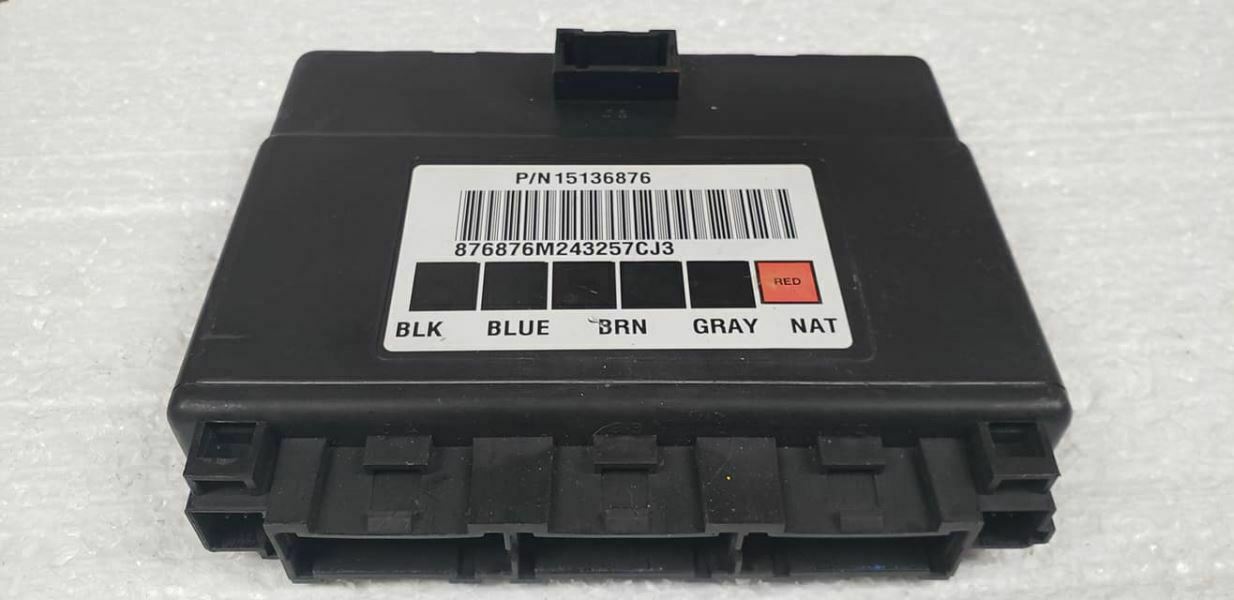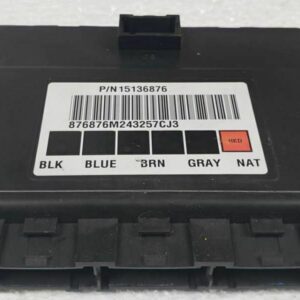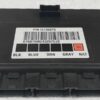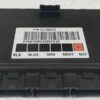Restore Your Vehicle’s Electrical System with a Reliable, Pre-Programmed BCM
If you’re dealing with bizarre electrical problems in your GM truck or van—like power windows with a mind of their own, flickering dash lights, or a security system that won’t cooperate—you’re not alone. As a technician with over 20 years of experience, I’ve seen these exact issues hundreds of times, and the culprit is almost always a failing Body Control Module (BCM). The BCM is the central hub for your vehicle’s body electronics, and when it starts to go, it can create a cascade of frustrating and seemingly unrelated symptoms. This isn’t just an annoyance; it can affect vehicle security and safety.
Forget the hassle and high cost of a dealership visit. We offer a dependable, direct-replacement BCM that arrives at your door pre-programmed for your specific vehicle. Simply provide us with your VIN during checkout, and our experts will flash the module with the latest GM software before it ships. This eliminates the need for expensive scan tools and programming fees, getting you back on the road faster and with confidence in your repair.
Is Your GM Truck or Van Showing These Symptoms?
A faulty BCM can manifest in many ways. If you’re noticing any of the following, it’s a strong indicator that your BCM needs replacement. I’ve seen these BCMs cause intermittent issues that are a nightmare to diagnose if you don’t know what to look for.
- ✔ Erratic or non-functional power windows, door locks, and interior/exterior lights.
- ✔ The security or anti-theft system engaging randomly or preventing the engine from starting.
- ✔ Gauges on the instrument cluster behaving erratically or not working at all.
- ✔ A persistent battery drain that leaves you with a dead battery overnight (often caused by the BCM not letting other modules go to ‘sleep’).
- ✔ Diagnostic Trouble Codes (DTCs) related to communication errors (U-codes like U0140) or specific body faults (B-codes).
- ✔ Horn honking unexpectedly or the panic alarm going off without reason.
From the Diagnostic Bay: The Case of the Phantom Battery Drain
I once had a 2006 Silverado 2500 in my shop that had been to two other places for a battery that would die every 2-3 days. The owner had replaced the battery and alternator twice. After hooking up an ammeter, I saw a 400mA draw that never timed out. By pulling fuses one by one, I isolated the draw to the BCM circuit. The internal circuits of the original BCM had failed, preventing it from entering its low-power sleep mode. Installing a new, properly programmed BCM solved the problem instantly. This is a classic failure pattern for the 2003-2007 GM BCM.
A Straightforward Guide to Your BCM Installation
Replacing the BCM is a manageable job for a DIYer with basic tools. Since we handle the programming, you can focus on the physical swap. The location varies slightly between trucks and vans.
- Safety First: Always disconnect the negative terminal from your vehicle’s battery before starting any electrical work.
- Locate the BCM: On Silverado and Sierra pickups, it’s typically found under the driver’s side of the dashboard, near the steering column. On Express and Savana vans, it’s usually behind the center dash trim.
- Remove Trim Panels: Carefully remove any plastic trim or panels necessary to access the module. Keep track of your screws and clips.
- Disconnect and Remove: Unplug the electrical connectors from the old BCM. They have locking tabs that need to be depressed. Once disconnected, unbolt or unclip the module from its mounting bracket.
- Install the New BCM: Mount your new, pre-programmed BCM in the same location and reconnect all electrical connectors, ensuring they click securely into place.
- Reconnect Battery & Test: Reinstall any trim panels you removed. Reconnect the negative battery terminal. Start the vehicle and test all functions: lights, locks, windows, horn, etc.
Important Post-Installation Note: In some cases, additional vehicle-specific relearn procedures may be required. For instance, if your airbag light is on, a “Setup SDM Primary Key” procedure may be needed. A “Brake Pedal Position Relearn” might also be necessary. These procedures require a professional-grade scan tool. Always consult a factory service manual for your specific model’s requirements.
Will This Fit My Truck or Van?
This BCM is a direct replacement for a wide range of GM vehicles and is compatible with multiple part numbers. Please verify your vehicle is on the list below. This module replaces part numbers: 15167329, 15194169, 15747545, 15136224, 15116065, 15198115, 15136876, and 10367689.
Chevrolet Silverado & GMC Sierra Pickups (1500, 2500, 3500) (2003-2007 Classic)
Chevrolet SSR (2003-2006)
Note: Fitment can depend on specific options like Crew Cab vs. non-Crew Cab, transmission type, and commercial packages. Please review the detailed fitment list from the original listing or contact us with your VIN to confirm compatibility. This is the definitive way to ensure you get the right 2003-2007 GM BCM.
Frequently Asked Questions
Do I need to send my old BCM back?
No. There is no core charge for this part. You can keep your original module.
Is this BCM truly plug-and-play?
For most vehicles, yes. We program it to your VIN, which handles the critical setup. However, as noted, some models may require a simple relearn procedure for the airbag or brake pedal position sensor, which needs a capable scan tool.
What information do you need from me?
After you place your order, we require your vehicle’s 17-digit Vehicle Identification Number (VIN). This is essential for us to program the BCM correctly for your truck or van’s specific options.
Will this fix my security light issue?
In most cases, yes. A failing BCM is a very common cause of Passlock/Passkey security system faults on these GM vehicles. This programmed module restores that functionality.
Where is the BCM located on my 2004 Silverado?
On 2003-2007 Classic Silverado and Sierra pickups, the BCM is located under the driver’s side dashboard, to the left of the steering column. It is typically held in a plastic bracket.
What if my part number isn’t listed but my vehicle is?
The listed part numbers (15167329, 15116065, etc.) are often superseded. As long as your vehicle model and year are on our compatibility list, this module, once programmed to your VIN, will function correctly.



